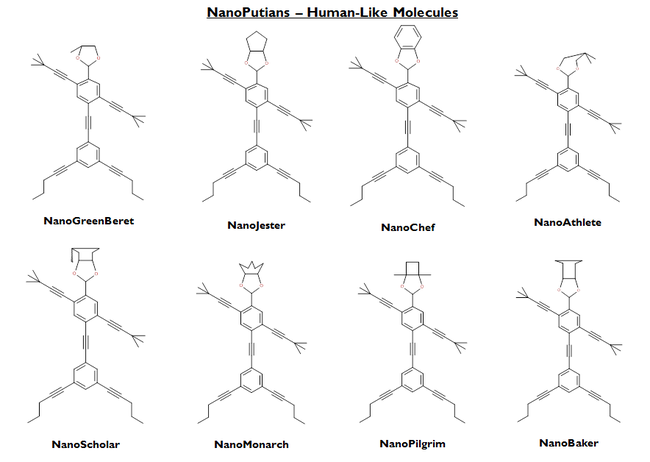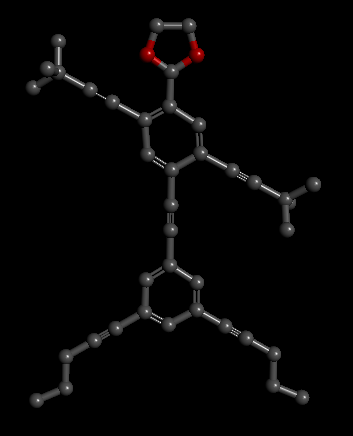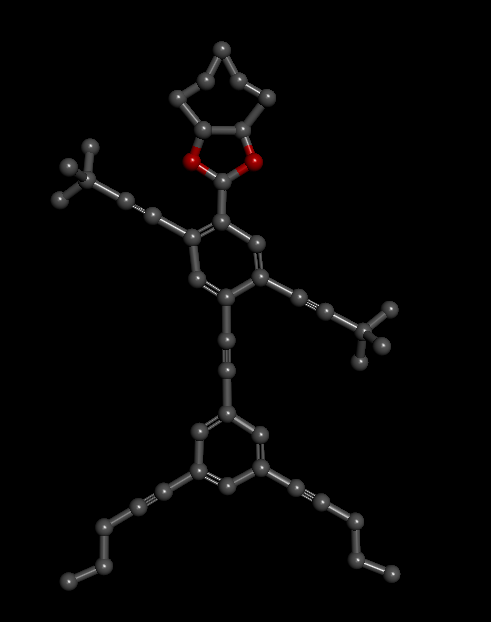NanoPutians - Human-like molecules.
NanoPutians are a family of molecules synthesised by Dr. James Tour and colleagues at Rice University in Texas in 2003 to resemble humans, but are only 0.000000002 metres tall!! The name NanoPutian comes from the Lilliputians that lived in Jonathan Swift’s classic story Gulliver’s Travels and their size as nano means 1x10-9 (or 0.000000001) metres.



